At 11h I called Walter Felber over Google Hangouts and he immediately began to talk about the contract which I had sent him. His concern was the application of his System Felber®, which I had inadvertently filmed while visiting his flat. I had little interest in using that footage, other than perhaps to show the amount of collecting, storing and categorizing of junk in his apartment and during the conversation I already decided to not use that material. He insisted on sending me a five-sentence contract to clarify that the material could be used and published for personal interest but that it could not be used for commercial interest. When I mentioned that the material with which I was most interested was actually about the Grazbach, and not the System Felber, he stated that it was fine to use that material as I wished.
I visited the Neue Galerie Joanneum to decompress and saw the Günter Brus show. It turned out that Gunter Brus had his own museum, the Bruseum. The revelation was confound. I found the whole taxonomical system and relationship between buildings, rooms and institutions a little confusing in Graz. I mentioned this in regard to how this fellowship was a collaboration of different organizations, but this Bruseum was another level of abstraction. The Neue Galerie was a building and museum, which was part of the Universalmuseum Joanneum system. Within the Neue Galerie was the Bruseum, which were several rooms, a wing even, of the Neue Galerie, dedicated to the artist. But just across the staircase were rooms that were not the Bruseum, which were just the Neue Galerie, and had entirely different works and exhibitions that had nothing to do with the Günter Brus.
The show that I came to see was awesome. I learned of Günter Brus and the Viennese Actionists decades ago, even before graduate school, and had really loved their work. It was so disgusting; it seemed like a time capsule that was both dated but also indicative of this other time when everything that we knew and valued today didn’t matter at all. Two things were clear in the Bruseum: Günter Brus was troubled and not by laziness. The hundreds of drawings of bodily mutilation were a refreshing reminder of juvenile drawings that simply could not be done today without someone calling the police or prescribing something. I really loved his use of staples and aluminum foil in his drawings.
In his drawings, the body looks like a machine, a city, with processes occurring through body parts. The drawings series spanned decades and thus left the scope of a series, or serial production in which an artist turned out dozens of drawings in a short period, for example in advance of a show, and enters the scale of a preoccupation. The books were great.
Across the stairwell I saw the collection shows. The paintings of Fritz Martinz, remniscent of Lucien Freud, were quite nice. Volumnus nudes rendered with a scribbled identity, also recall the misanthropic disposition of Egon Schiele. I learned of Wilhelm Thony, a Secession artist whose cosmopolitan, even global biography was impressive, given he died in 1949. Born in Graz, he made work in Munich, Paris, Cote d’Azur and New York, where he died. His works are people of culture; suit wearers, urbanites, in social situations, which may be as mundane as walking on a bridge, or standing near the Seine. Stylistically he appears a protege of Cezanne, but without structure; lose, muddy, absent of fore or background; post-impressionistic; brush strokes as contours. Personally, I didn’t care for his work, it didn’t move me, but in looking at it I realized a role that art once played: it could travel. And artists as well. And because artists and works could travel, artistic styles too traveled, particularly between cities. Because that’s where cars, boats, planes and trains went.
On the way back to Priesterseminar I picked up a pastry and took a tea break with Zihua. What I anticipated to be a 30 minute chat evolved into a much longer discussion that included Ksenya about styles of filming, cinema verite, Vox populi, documentaries and art films. Did we feel an obligation to truth? Her background with journalism/journalistic ethic, my aversion from art that sells, or deals, truth.
At 18h I met Michael and Marleen under the Weikhard Uhr, a traditional meeting place in Graz. I loved that Graz had a predetermined, widely known meeting location and that there was a clock there to confirm punctuality. A meeting really consists of three variables: a place, a time, and a person(s). Under the Weikhard Uhr one find a cluster of waiters, awaiting. It was beautiful. Every city needs a public-clock meeting place.
We went to a Cafe Mitte off Freiheitsplatz; sort of Thai-inspire fare dulled down for the Austrian palette and supplemented with Austrian spirits. I had a Zwetschenscahps, plum liquor. Later I had a vogelbeerschnapps, distilled from pine cone seeds that were first collected for baiting birds. It was the more expensive of the schapps on the list, though in terms of flavor profile, I thought it was similar to the plum: an essence, rather than flavor. Like a vodka, but with tact.
Michael and Marleen were great to talk to because there was an ecosystem that they’ve developed, into which one was visiting during the conversation. They had positions and rebuttals to the other’s position; I didn’t hit anything dramatically sensitive. Less of a minefield and more of walking across the bedroom of an adolescent while not wearing shoes. We chatted about Graz, Günter Brus and making art. It was light, friendly and I left with the feeling that I’d like to see them again, and that I would, maybe in an airport or art exhibition somewhere.
